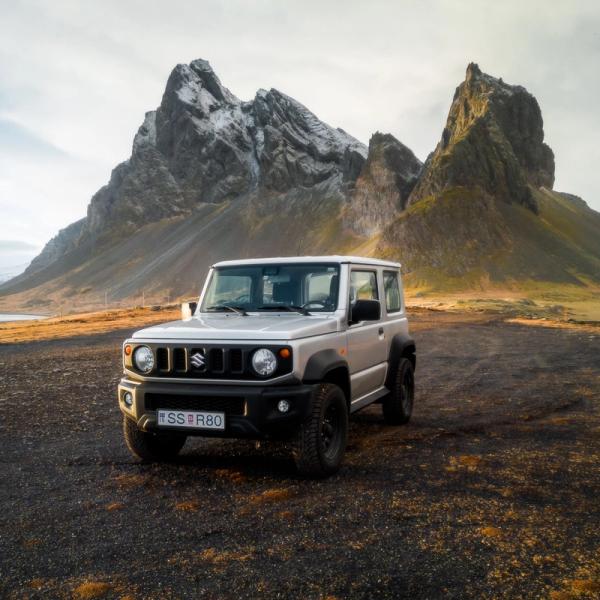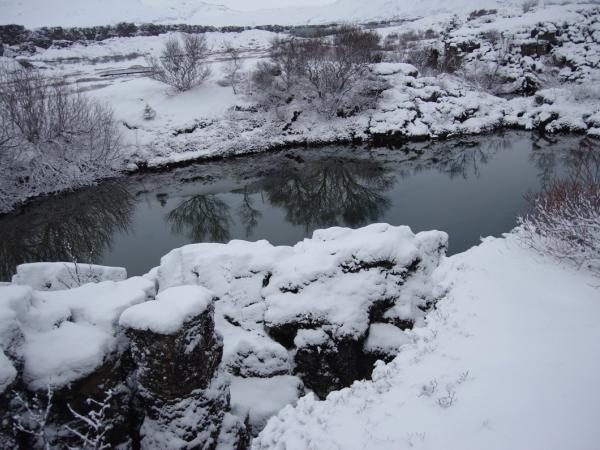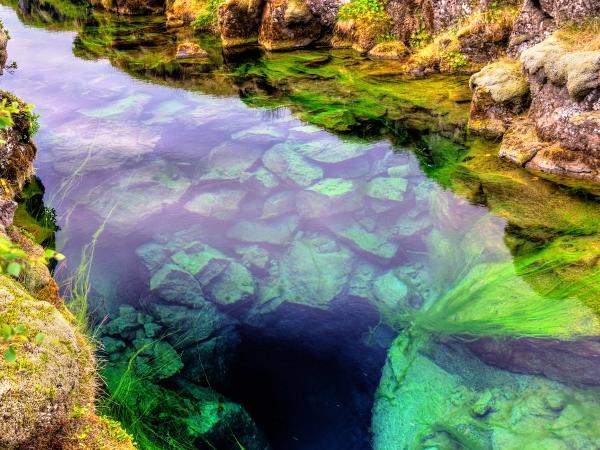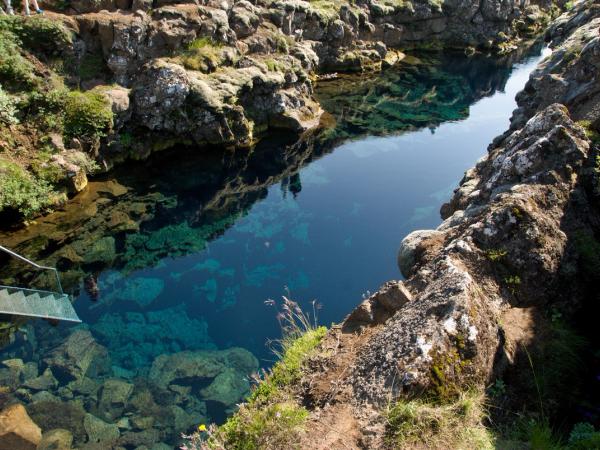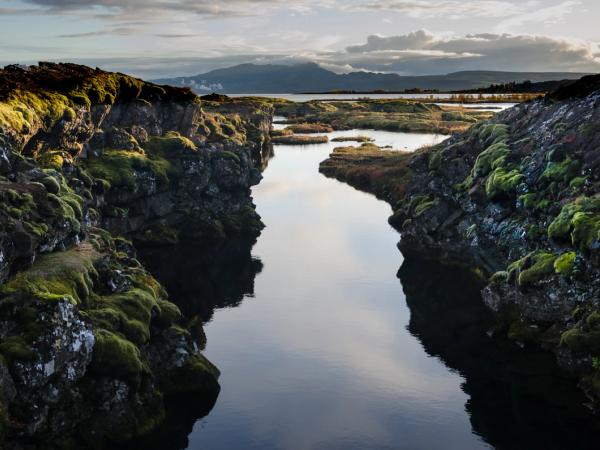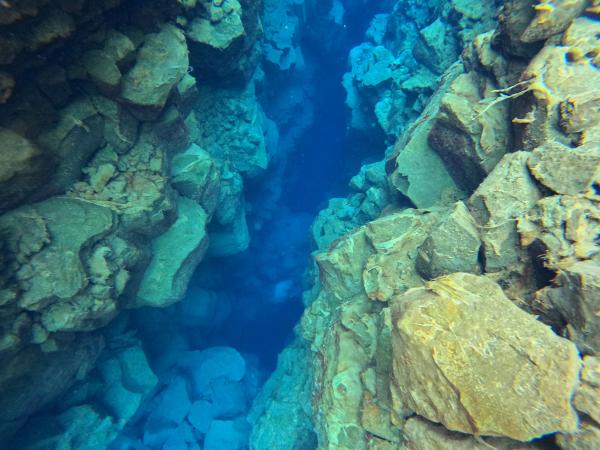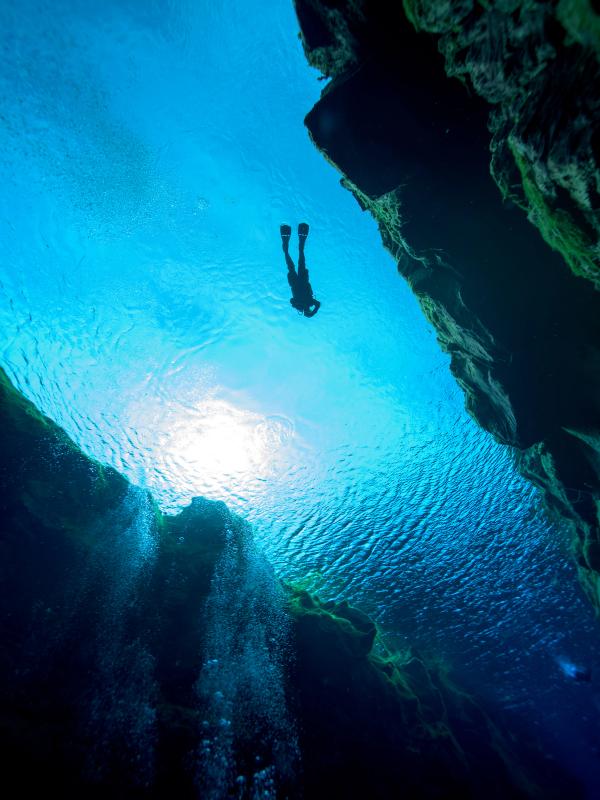
Silfra Fissure: Swimming Between Two Continents in Iceland
Imagine swimming in water so clear you can see over 100 meters ahead, floating between two continents, with the North American plate on one side and the Eurasian plate on the other. This isn't made up; it's the Silfra Fissure in Iceland, one of the world's most unique diving spots.
Key takeaways
- Silfra is the only place on Earth where you can swim between two tectonic plates
- The water is incredibly clear with visibility over 100 meters due to decades of glacial filtration
- You need to join a guided tour – no independent swimming or diving is allowed
- Dry suits are needed due to the constant 2-4°C (35-39°F) water temperature
- Book at least 2-4 weeks ahead during peak season (June-August)
What's the Silfra Fissure?
The Silfra Fissure sits in Þingvellir National Park (pronounced "Thingvellir"), about an hour's drive from Reykjavik. It's a crack in the Earth's surface where the North American and Eurasian tectonic plates meet and are slowly moving apart at a rate of about 2 cm per year.
This isn't just any crack; it's filled with crystal-clear glacial water from Langjökull, Iceland's second-largest glacier. The water takes 30-100 years to filter through porous lava rock before reaching Silfra, creating some of the purest and clearest water on Earth.
The fissure has four main sections: the Big Crack (where you can almost touch both continents at once), Silfra Hall (a wide open area), Silfra Cathedral (the deepest and most impressive section), and Silfra Lagoon (a shallow area with bright blue water).
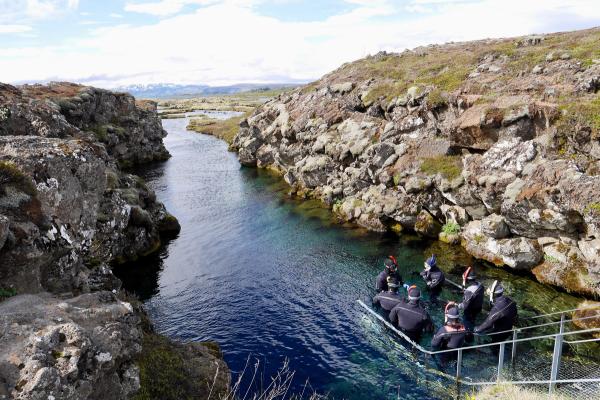
How was it formed?
Silfra exists because Iceland sits directly on the Mid-Atlantic Ridge, where two massive tectonic plates are gradually separating. A big earthquake in 1789 opened up several fissures in the area, with Silfra being the largest and most dramatic.
As the plates continue to drift apart, occasional earthquakes create new cracks and widen existing ones. The underground water from Langjökull glacier fills these spaces, creating this unusual swimming spot. The ongoing movement means Silfra is slowly changing right before our eyes.
The water stays between 2-4°C (35-39°F) year-round, regardless of the season. This is cold, but you’ll be comfortable with the modern drysuit they provide you for the 30-45 minutes you'll spend in the water.
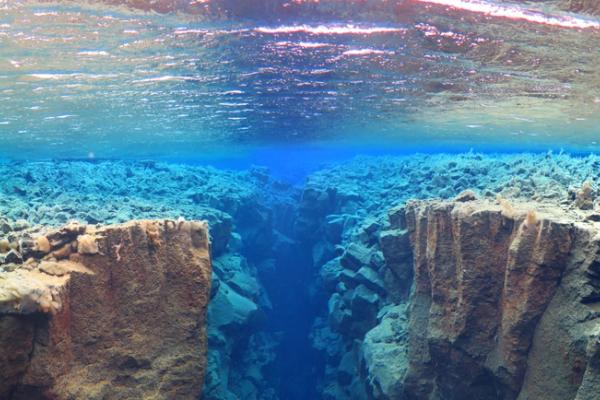
Cultural and Historical Significance
Silfra is situated within Þingvellir National Park, a UNESCO World Heritage Site of great historical significance to the people of Iceland. This is where the Althing, one of the world's oldest parliaments, was established in 930 AD.
Vikings would meet here to settle disputes, create laws, and hold gatherings. Standing at Lögberg (Law Rock), you can look out over the same rift valley, seeing the same signs of tectonic activity that Vikings saw over a thousand years ago.
Local guides often share Icelandic stories about the fissures being "gateways to the underworld," where spirits or hidden people (huldufólk) are said to reside.
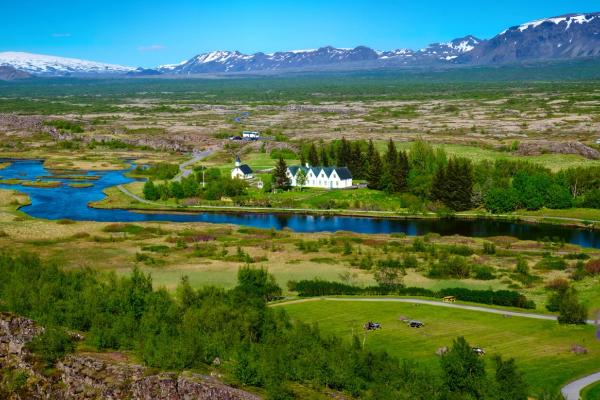
Location & How to Get There
Finding your way to this underwater wonder is straightforward, though you'll need to plan ahead. Silfra's location within a national park makes it accessible while still protecting it from overdevelopment.
Silfra is located in Þingvellir National Park, about 55 km (34 miles) northeast of Reykjavik. The fissure sits at the northern edge of Þingvallavatn Lake, Iceland's largest natural lake.
You have several options to reach Silfra:
By Car: The easiest way is to rent a car and drive yourself. From Reykjavik, take the Ring Road (Route 1) north, then turn onto Route 36 toward Þingvellir. Follow signs to the Silfra parking lot (P5 or Valhöll), located near the Visitor Center. The drive takes approximately 45-60 minutes, depending on the weather and the traffic conditions. Parking costs 1000 ISK (about $7) for the day.
By Tour: Most visitors book a snorkeling or diving tour that includes transportation from Reykjavik. Many companies offer pickup services, typically included in their tour packages. This option saves you from driving and navigation.
By Public Transport: Public buses to Þingvellir run infrequently and don't cater specifically to Silfra visitors. The closest bus stop is at the Þingvellir Visitor Center, about a 15-minute walk from Silfra's entry point. Given the limited schedule, this isn't ideal unless you're on a tight budget and have plenty of time.
Whatever option you choose, be sure to arrive at least 30 minutes before your scheduled dive or snorkel time. You'll need to check in, complete the necessary paperwork, and get fitted for your dry suit.
Best Time to Visit
Iceland's weather varies dramatically throughout the year, affecting your Silfra experience in different ways. While the water temperature stays constant, the surrounding conditions and crowds change with the seasons:
Summer (June-August): The most popular time to visit with milder temperatures (10-15°C/50-59°F), almost 24 hours of daylight in June and July, and the best overall weather. The downside is larger crowds and higher prices. Book at least a month in advance during this peak season.
Spring/Fall (April-May, September-October): These middle seasons offer a good compromise: fewer tourists, slightly lower prices, and still decent weather. Temperatures hover around 5-10°C (41-50°F), and you might see the Northern Lights in late September and October.
Winter (November-March): The least crowded time with the lowest prices, but you'll face cold air temperatures (often below freezing), limited daylight (as little as 4-5 hours in December), and potentially difficult road conditions. The upside is seeing Silfra surrounded by snow and ice, plus good chances to see the Northern Lights.
For the best visibility, try to book a morning tour before the wind picks up and other visitors stir up sediment. The light at Silfra is also nice in late afternoon during summer, when the sun's angle creates beautiful beams through the clear water.
Things to Do at Silfra
The crystal waters of Silfra offer several ways to experience this natural wonder. Depending on your skills, preferences, and budget, you can choose from snorkeling, diving, specialty courses, or photography sessions.
Snorkeling
Snorkeling is the most popular and accessible way to experience Silfra. No prior experience is required, but you must be comfortable in the water, able to swim, and at least 12 years old.
A typical snorkeling tour lasts about 2-3 hours total, with 30-45 minutes in the water. You'll be provided with a dry suit, neoprene hood and gloves, fins, mask, and snorkel. Under your dry suit, you'll wear thermal layers provided by the tour company.
The experience begins with a safety orientation and dry suit fitting. Your guide will help you enter the water via a staircase and lead you through Silfra's four sections. You'll float on the surface, face down, letting the gentle current carry you along as you look at the blue water and rock formations below.
Snorkeling tours cost around $150, including equipment rental and the 1,500 ISK Silfra fee.
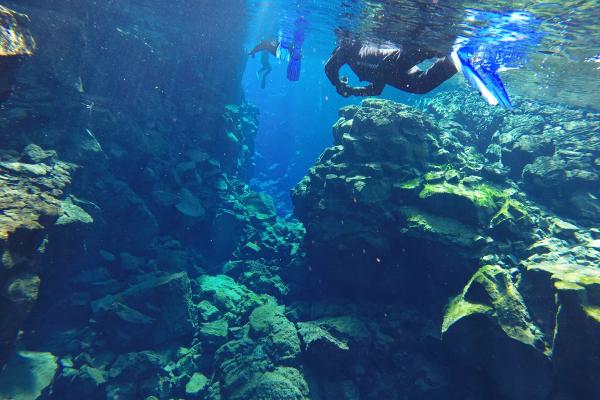
Scuba Diving
For certified divers, Silfra offers a more immersive experience. You'll explore depths of 7-18 meters, seeing the fissure's geological features up close.
Requirements for diving include:
- Open Water certification
- Dry suit certification or at least 10 logged dry suit dives in the last two years
- Minimum age of 17
- Good physical health
Diving tours cost approximately $290 for a single dive, with options for two-dive packages. Groups are smaller than for snorkeling, with a maximum of three divers per guide.
The depth limit for recreational diving is 18 meters, though some parts of Silfra Cathedral go deeper (up to 63 meters). Cave diving is not allowed to protect the underwater environment.
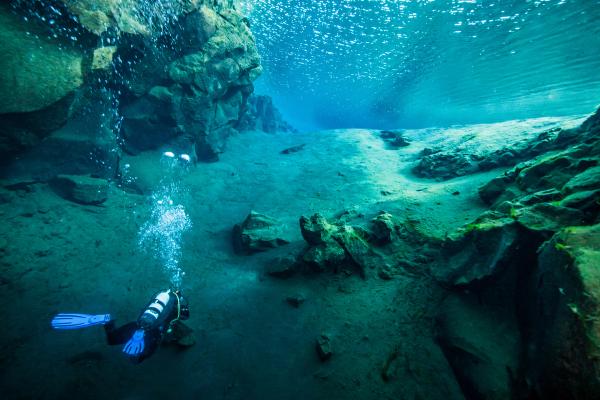
PADI Silfra Tectonic Specialty Course
For serious divers, some operators offer the PADI Silfra Tectonic Specialty Course. This certification focuses on Silfra's geology and drysuit techniques, combining theoretical lessons with practical dives.
The course costs around 20.000 ISK ($165) and gives you deeper knowledge of tectonic diving plus an official PADI specialty certification.
Photography
Silfra's crystal-clear water makes it a photographer's dream. Consider renting or bringing an underwater camera; most tour operators rent GoPros for around 4,990 ISK ($36).
For the best shots:
- Use a wide-angle lens to capture the scale of the fissure
- Try to shoot during morning hours when light penetration is best
- Include a person in some shots to show scale
- Capture the contrast between the blue water and the colorful algae ("troll hair")
Some operators offer specialized photography tours with guides who know the best spots and angles.
Places to Visit Nearby
Iceland's famous Golden Circle route includes Silfra, making it easy to combine your underwater adventure with other natural wonders. With efficient planning, you can visit several of these attractions in a single day.
Þingvellir National Park
Since you're already in the park for Silfra, take time to explore the rest of this UNESCO site. Key spots include:
- Öxarárfoss Waterfall: A 20-meter waterfall accessible via a short hike
- Lögberg (Law Rock): Where laws were recited and disputes settled during Viking times
- Almannagjá Gorge: A dramatic cliff face showing the boundary between tectonic plates
- Visitor Center: Exhibits on Iceland's geology and history
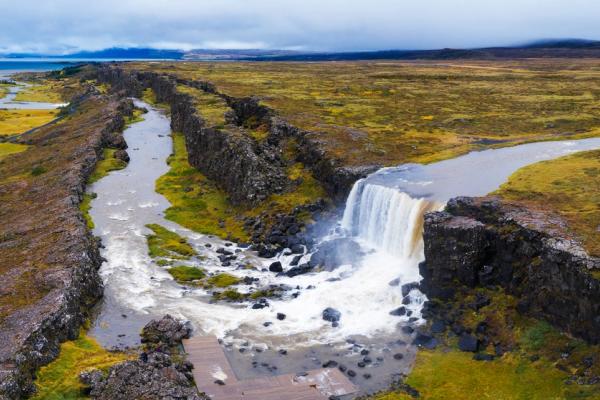
Geysir Hot Springs Area (50 km, ~45-minute drive)
This geothermal area features Strokkur, a geyser that erupts every 5-10 minutes, shooting water 15-40 meters into the air. The area also includes bubbling mud pools, steam vents, and the dormant Great Geysir, which gave its name to all geysers worldwide.
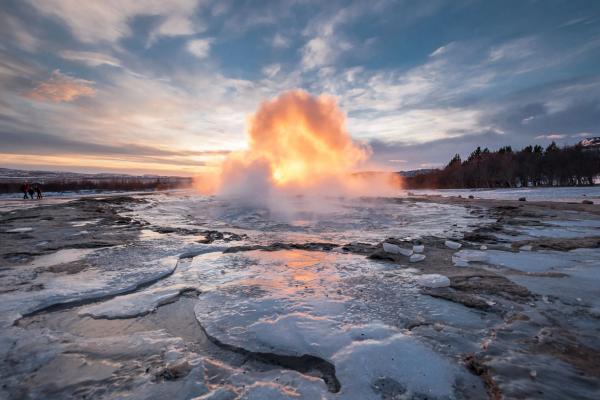
Gullfoss Waterfall (60 km, ~50-minute drive)
Known as the "Golden Falls," this two-tiered waterfall cascades 32 meters into a dramatic canyon. Multiple viewing platforms offer close-up and panoramic views. On sunny days, you might see rainbows in the mist.
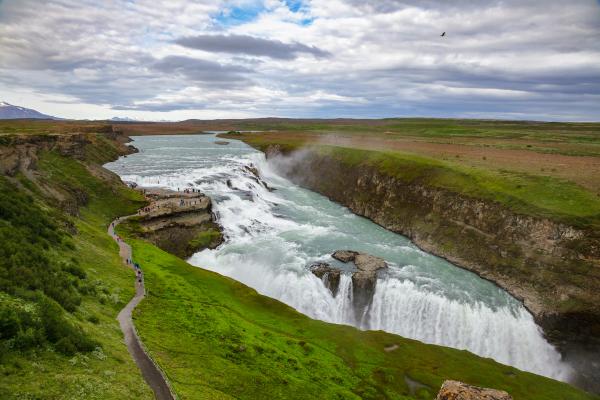
Secret Lagoon (75 km, ~1-hour drive)
After the cold water of Silfra, a visit to this natural hot spring is very pleasant. Less crowded and more authentic than the famous Blue Lagoon, the Secret Lagoon maintains a temperature of 38-40°C (100-104°F). Entry costs about 4200 ISK ($35).
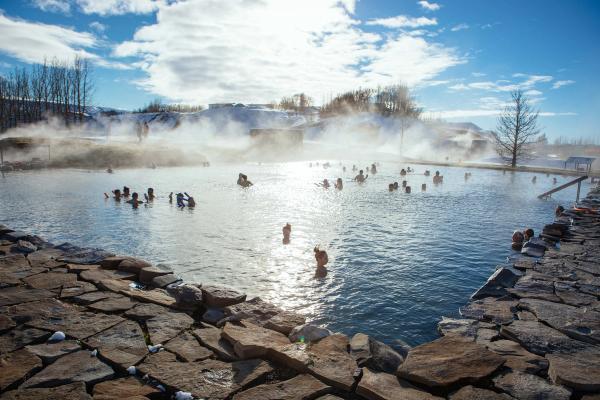
Kerid Crater (40 km, ~40-minute drive)
This 3,000-year-old volcanic crater is home to a turquoise lake, surrounded by red volcanic slopes. A 15-minute loop trail takes you around the rim and down to the lake. The entry fee is about 600 ISK ($5).
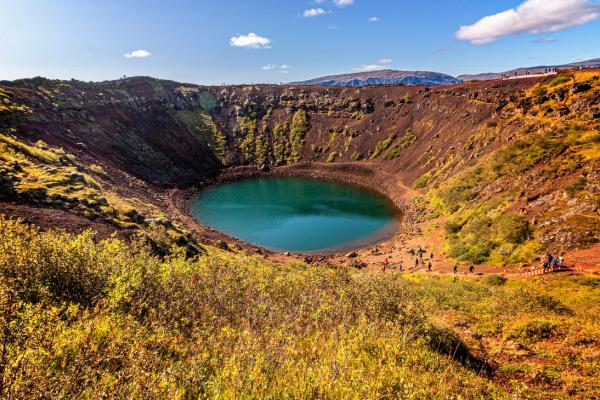
Why is Silfra Worth Visiting?
With so many natural wonders in Iceland, you might wonder if Silfra deserves a spot on your itinerary. The answer is a definite yes, and here's why this underwater marvel stands out from other attractions.
Geological Wonder
Silfra offers a rare chance to witness plate tectonics firsthand. While we often learn about continental drift in textbooks, here you can swim between two continents. The fissure is a living example of geological processes that continue to shape our planet.
Unparalleled Water Clarity
With visibility exceeding 100 meters, Silfra's water clarity is matched by very few dive sites in the world. The filtration process through lava rock removes virtually all particles, creating an unusual swimming experience. Many divers describe it as feeling like flying, as the water is so clear that it seems to disappear.
Unique Ecosystem
Despite the cold temperatures, Silfra hosts a fascinating ecosystem. The most notable inhabitant is Crymostygius thingvallensis, a tiny amphipod crustacean found nowhere else on Earth. You'll also see bright green "troll hair" algae clinging to rocks, adding splashes of color to the blue underwater landscape.
During August and September, you might spot Arctic Char swimming through the fissure during their mating season. The fissure's connection to Þingvallavatn Lake makes it part of a larger ecosystem that scientists are still studying.
Bucket-List Experience
How many people can say they've swum between continents? Silfra offers a completely unique experience that's impossible to replicate elsewhere. It consistently ranks among the world's top dive sites and is often listed as a must-visit destination for adventure travelers.
The combination of geological significance, water clarity, and the beauty of the underwater landscape makes Silfra truly special.
Summary
The Silfra Fissure offers a truly unique experience: swimming between continental plates in water so clear it seems like you're flying. Beyond the unusual experience of swimming between continents, Silfra offers stunning underwater views, a glimpse into geological processes that shape our planet, and a chance to experience one of Iceland's most interesting natural wonders.

